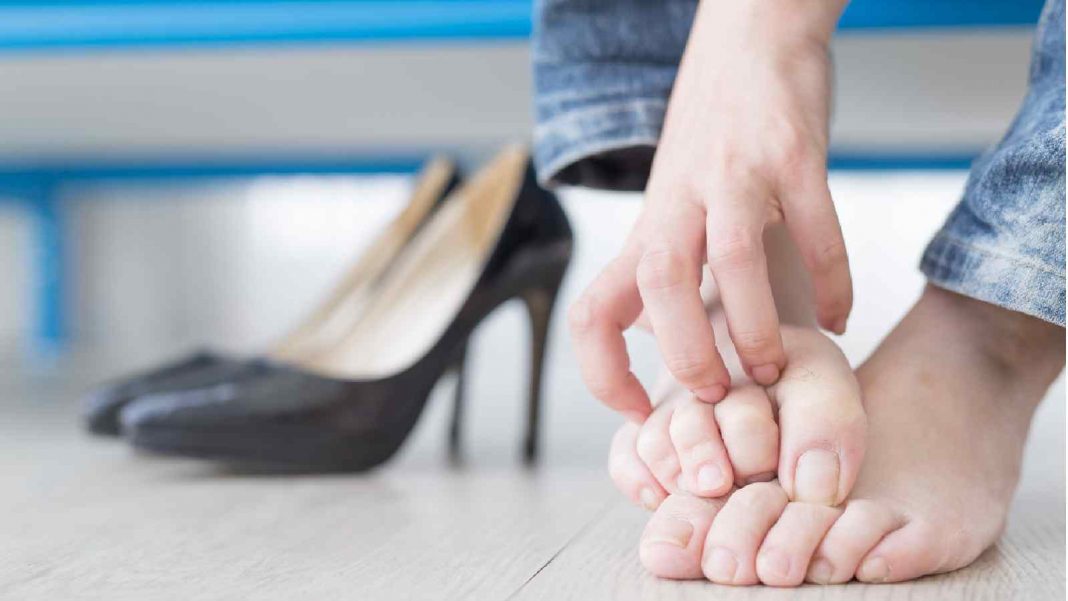Most of us associate the monsoon with relief, but we should not discount the fact that the rainy season also brings a number of ailments. You may be prone to various fungal infections in monsoon. From ringworm to nail problems – fungal infections are one of the most common problems seen by dermatologists during the rainy season.
Fungal infections are prevalent due to the increase in humidity and moisture that provide the ideal conditions for fungi to flourish and spread. Fungi thrive in warm, wet environments, and the dampness caused by rain and humidity creates a perfect breeding ground for them. Moreover, mold grows easily in damp clothes, shoes and surroundings, increasing the risk of infections.
Inadequate ventilation in homes and the inability to keep oneself entirely dry during the rainy season further contribute to the vulnerability to fungal diseases. The most commonly affected areas include the inner thighs or groin area, face, scalp, and buttocks.
Medically known as Tinea, fungal infections can manifest as various conditions such as athlete’s foot, jock itch, ringworm and yeast infections. These infections can affect individuals of any age group. Children commonly experience scalp infections, men often develop them in the inner thigh or groin area, and women are more prone to infections in body folds.

Several factors contribute to the onset of fungal infections, including ill-fitting clothing, sweating, poor personal hygiene, wet clothes, increased moisture, poor immunity, steroid use, and underlying conditions like diabetes, chemotherapy, or HIV.
Common types of fungal infections in monsoon
Fungal skin infections typically present as red, itchy areas with hyperpigmentation, blisters, and swelling.
Let us take a closer look at some of the most common fungal infections during the monsoon season:
1. Seborrheic Dermatitis
In the monsoon, eczema experiences a severe flare-up. This could be due to bacterial growth, humid conditions and moist skin. If you have a history of seborrheic eczema or seborrheic dermatitis, it is advisable to avoid getting wet in the rain.
2. Foot Infections
Athlete’s foot is a common infection that affects the foot, particularly the spaces between the toes. The dampness during the monsoon provides an ideal environment for fungal growth. To prevent athlete’s foot, keep your feet clean and dry and avoid wearing tight, non-breathable shoes.
3. Nail Infections
Toenail fungus infections are more prevalent during the monsoon season. The dirt trapped in the nails during this time attracts germs that cause nail infections. Therefore, it is essential to keep your nails clean and well-trimmed, especially if you have athlete’s foot.

4. Tinea Cruris and Corporis
Ringworm, a typical monsoon infection, commonly affects the feet, neck and underarms. Wearing wet clothing for prolonged periods can be a contributing factor. To prevent ringworm, it is advisable to wear loose, comfortable clothing that allows air circulation.
5. Tinea Capitis
Tinea capitis is a fungal condition that affects the scalp, beard, eyebrows and eyelashes. This fungus infects the entire scalp after originating in the hair follicles. Unlike other fungal infections, tinea capitis can spread when people share grooming or haircare supplies. Keeping the affected area clean and dry is crucial.
Tips to avoid fungal infections in monsoon
While the monsoon season brings relief from the scorching heat, it also presents a significant risk of fungal infections. By being aware of the common types of fungal infections during the monsoon and taking necessary precautions, we can minimize the risk of falling prey to these ailments.
Also read: Vitamin C could be the solution to your fungal skin infection. Yes, it’s true
Maintaining good personal hygiene, keeping oneself dry, wearing breathable clothing, and practicing proper foot care are essential steps in preventing fungal infections. In case of any emergency, visit to your nearest doctors and it is also recommended to choose a facility with a full-time specialist service to ensure ongoing and timely intervention.
Embrace the monsoon with caution and stay ahead of the infection game. Remember, a little care can go a long way in keeping fungal infections at bay during this season of showers. Stay dry, stay healthy!







